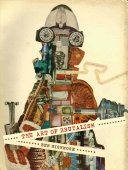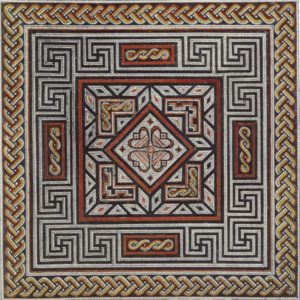
Cotterstock (2) Roman villa, mosaic pavements (from E. T. Artis, The Durobrivae of Antoninus (1828)) from British History Online
To celebrate the IHR Winter Conference 2018 entitled, Home: new histories of living it seems sensible to explore the theme in the Bibliography of British and Irish History.
There is much on Roman villas and their mosaics as well as articles on their interior decoration and layout such as Classical reception rooms in Romano-British houses which argues that by the late antique period the reception facilities and associated social life and conduct were as those found in other parts of the Roman Empire.
Moving to Anglo-Saxon and Viking Britain there is coverage of household goods including toys, combs, doors and furniture. A similar pattern is followed in the medieval period with highlights including Beds and chambers in late medieval England : readings, representations and realities which claims to be the first interdisciplinary study of the cultural meanings of beds and chambers. The book uses a range of literary and visual sources, including manuscript illumination, household goods, romances, saints’ lives, plays, wills, probate inventories as well as church and civil court documents. The article Space and gender in the later medieval English house uses “The Ballad of the Tyrannical Husband,” a late fifteenth-century text, that associates men with the outdoors and women with the home and the domestic. The article also draws upon probate inventories as well as archaeological evidence and contrasts peasant and bourgeois society as shown in the physical fabric and furnishings of homes.
Probate records and inventories are a useful source for not only furnishing but also the arrangement and interior decoration of the household. The book Women’s voices in Tudor wills, 1485-1603 : authority, influence and material culture has a chapter The dispersal of assets: undressing the house, undressing the body that looks specifically at the household arrangements including the use of the parlour as a dining room and, as women aged, a bedchamber.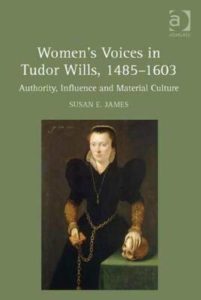
Christopher Dyer’s article, Living in peasant houses in late medieval England also uses probate inventories (mainly of fifteenth-century Yorkshire) revealing the use of furniture in halls, chambers and kitchens. The use of probate records and regional history is carried over in two further works: The material culture of the tradesmen of Newcastle upon Tyne, 1545-1642 : the Durham probate record evidence and From flock to feather and harden to holland : an investigation of the beds of Nottingham through the use of probate inventories 1688-1757 (East Midland Historian, 11, 2001 p. 47-57).
Looking at influences on taste and interior decoration, the long eighteenth-century covers both oriental influence (chinoiserie) and classical influences. The oriental influences include wallpapers, tapestries and, of course, porcelain and highlights include Fashioning bluestocking conversation : Elizabeth Montagu’s Chinese room (contained in Architectural space in eighteenth-century Europe: Constructing identities and interiors) and “Luscious Colors and Glossy Paint” : The taste for China and the consumption of color in eighteenth-century England (in The materiality of color : The production, circulation, and application of dyes and pigments, 1400–1800).
There is much more on classical influences on interior decoration and design. Ranging from articles on Inigo Jones in Representations of Inigo Jones’s Banqueting House : Development of sketches and architectural symbolism and From timber to plaster : Inigo Jones’s ceiling designs and London artisans in the 1630s (London Topographical Record, 31, 2015, p. 50-62) to monographs such as, James ‘Athenian’ Stuart 1713-1788 : the rediscovery of antiquity.
The work of Robert Adam is discussed in Fashion and function : the decoration of the library at Kenwood in context (contained in The country house : material culture and consumption; edited by Jon Stobart and Andrew Hann). The Stobart and Hann book leads us nicely into the Victorian/Edwardian country house era made popular by the Downton Abbey effect.
Taking a slightly different tack, let’s explore the demise of the country house in Lost mansions : essays on the destruction of the country house which covers Ireland, Scotland and the Marks Hall estate in Essex. The effects of World War One are explored in The country house and the Great War : Irish and British experiences. In Ireland the demise of the “big house” was hastened by the continuing wars (the subject even warrants a page on Wikipedia). Examples of articles on the subject include, The burning of country houses in Co. Offaly during the revolutionary period, 1920-3 (in The Irish country house). Big house burnings in County Cork during the Irish Revolution, 1920–21; and The destruction of the country house in Ireland, 1879-1973 (in Lost mansions).
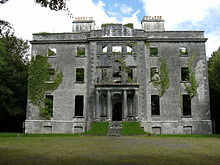
The ruins of Moore Hall, County Mayo, abandoned after being burnt down by the IRA in 1923 (Wikipedia)
Of course not everyone lived in country houses. The growth in philanthropy and social reform led to a concern for the living conditions of the rural and urban poor in slums. Attempts to rectify the situation included the gardens city movement, new towns, local and central government involvement, private charity including the establishment of almshouses, and the work of town planners and architects.
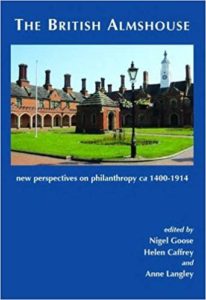
The title of this piece opened with Roman villas and ended with Brutalist architecture – for which we have “Group-cum-Brutalism”? Highgate Spinney, London, 1964–66, discussion of a five-story block of 30 flats designed by John Howard and Bruce Rotherham. Ben Highmore’s The art of Brutalism : rescuing hope from catastrophe in 1950s Britain not only explores the style adopted by painters, sculptors and other artists but also examines the styles influence on consumer culture and the domestic settings including the impact on the Ideal Home Exhibition.
